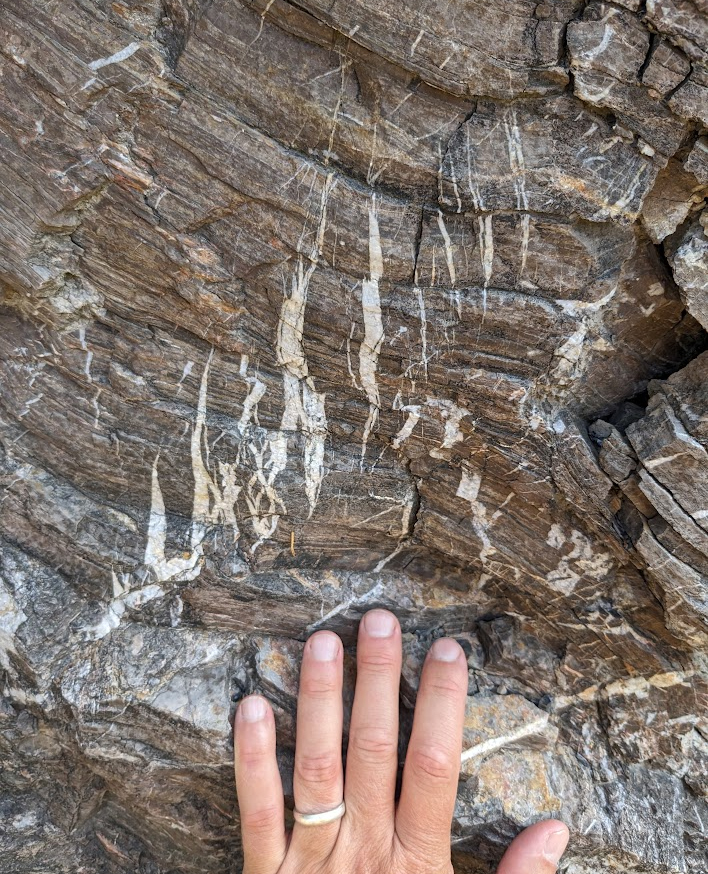I spent yesterday on Corridor H in eastern West Virginia’s Valley & Ridge province. The rocks here are a mid- to upper-Paleozoic set of strata that record the switch from post-Taconian passive margin sedimentation into Acadian clastic deposition, and then everything is deformed by Alleghanian folding and thrusting. I found myself taking photographs of the same old outcrops I know and love there – but here’s something new that I don’t think I’ve reported previously: a lovely set of tension gashes disrupting well laminated dolostones of the (Silurian-aged) Tonoloway Formation.

It’s a decent en echelon array of these short extensional veins, but then bedding-perpendicular compression resulted in the development of stylolites that cut across the veins, and make them appear “offset” in places – but not due to bedding-parallel slip, merely dissolution of material that once used to connect as-yet-undissolved sections of vein.

Very cool!! It looks, to me, like the stylolites and tension gashes formed during the same compressional episode, with, perhaps, a very slight counterclockwise rotation of the bedding between formation of the gash veins and development of the stylolites? I wonder which way is “up” and whether the beds wrap around (is this exposure part of a recumbent fold?).
I reckon that’s a possibility too!
Up is “up” here – Though there is meso-scale folding within this large roadcut, nothing is recumbent. The folds’ axial surfaces are for the most part vertical or close to it. Here’s an example.